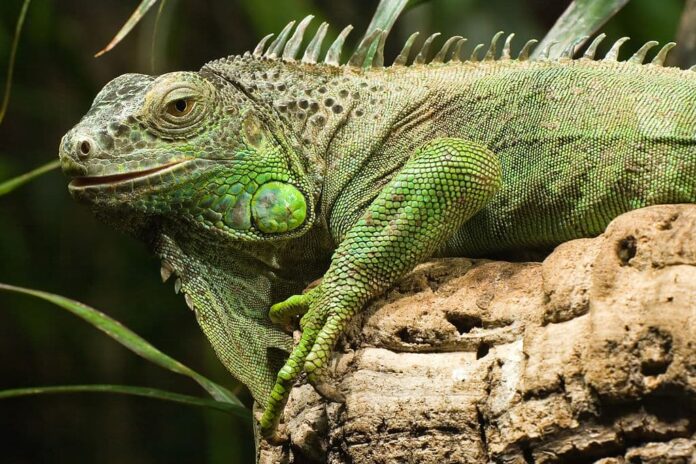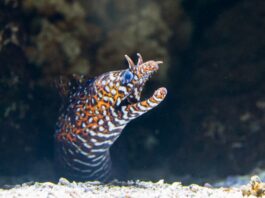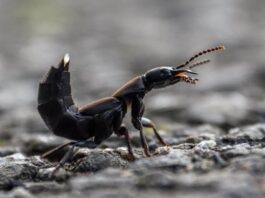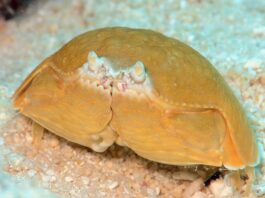We often hear people talking about some of the largest lizards that descend from dragons or dinosaurs. With the looks and the size, it is difficult to deny the fact that those enormous lizards are among those predators. Today, we will introduce you to some of the biggest lizards in the world that you might not know about. Each of them has reached a great size and weight that is heavy and big for a lizard. Let’s see and let us know which lizard from our list you think is the scariest.
1Komodo Dragon
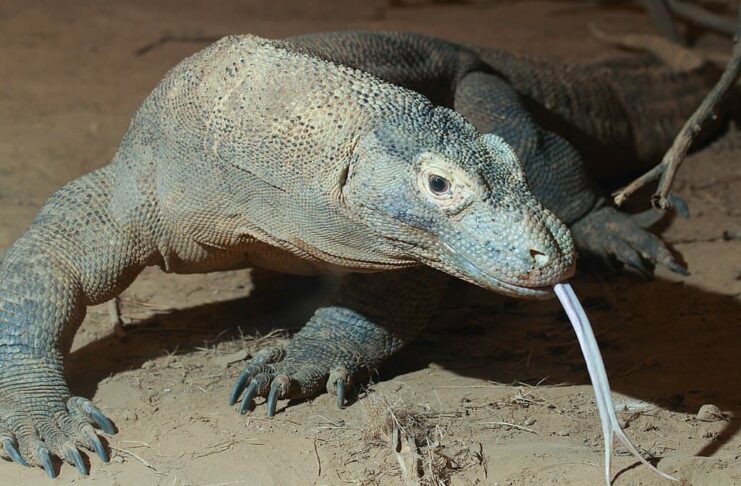
Habitat: Indonesia
With shark-like teeth and poisonous venom, Komodo Dragons are strong and dangerous enough to kill a human. As a matter of fact, they are the heaviest and largest lizards in the world. You can only find them in Indonesia, and there are some specific islands where these dragons live side by side with humans. Komodo Dragons rely on their sense of smell to detect food by using their long forked tongue to sample the air.
These large lizards eat almost any kind of meat of various sizes from small rodents to large water buffalo. Apart from their sense of smell, Komodo Dragons also have an awesome vision that allows them to see as far as 300 meters. Plus with their large, curved, ad serrated teeth, these lizards are fierce killers with powerful and strong bites. As an animal on top of the food chain, Komodo Dragons are the king of ecosystems in the area they live in.
2Asian Water Monitor

Habitat: South Asia, Southeast Asia
There are many species of monitors, and most of them are large and dangerous to humans. Monitors have the reputation of being able to crush human bones and damage the skin as well as surrounding tissue. But that’s not all, these monsters also have poisonous bites that result in swelling and excessive bleeding as well. Asian Water Monitors live close to water, and they usually inhabit primary forests and mangrove swamps.
Based on where they live, these lizards are excellent swimmers which allows them to hunt even easier. These carnivores feed on a wide range of prey from snakes and turtles to young crocodiles and catfish. Using their sharp and large teeth, they can tear off chunks of meat effortlessly.
Water Monitors’ threats are humans that use their skin to make shoes, belts, and handbags. Other uses included perceived remedies for common ailments and eczema, while some others even keep them as pets. Apart from that, loss of habitat and hunting are also parts of the decrease in population.
3Crocodile Monitor
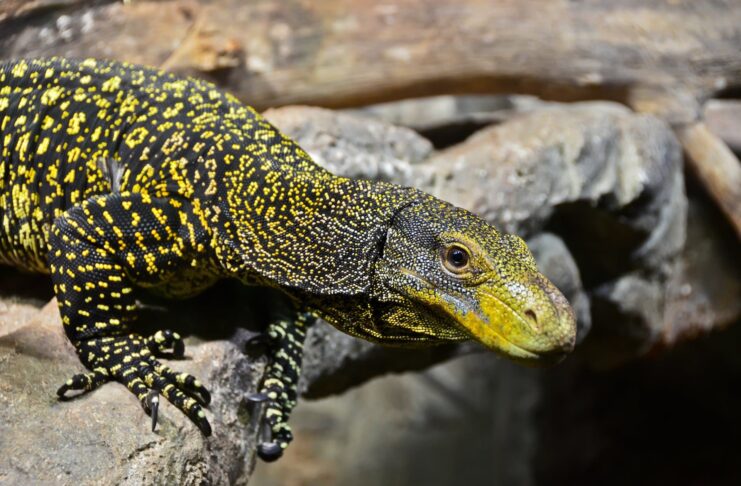
Habitat: New Guinea
This is a species of monitor lizard endemic to New Guinea, and the largest lizards in New Guinea as well. On top of that, these lizards are also one of the longest lizards in the world from head to tail. You can recognize them by their dark green body marked with bands of yellowish spots. Just like Water Monitors, these ones also live in mangrove swamps and coastal rainforests, especially in the southeastern part of the island.
The interesting thing is that these lizards are gifted with better teeth for seizing fast-moving prey. Their diet mostly consists of birds, small mammals, eggs, and carrion as well as pretty much any meat. However, they also face threats as well mostly from deforestation, poaching, and hunting. Native people hunt and skin them alive to make drums due to the belief that the species is an evil spirit. The spirit that climbs trees, walks upright, breathes fire, and kills men.
4Perentie Goanna
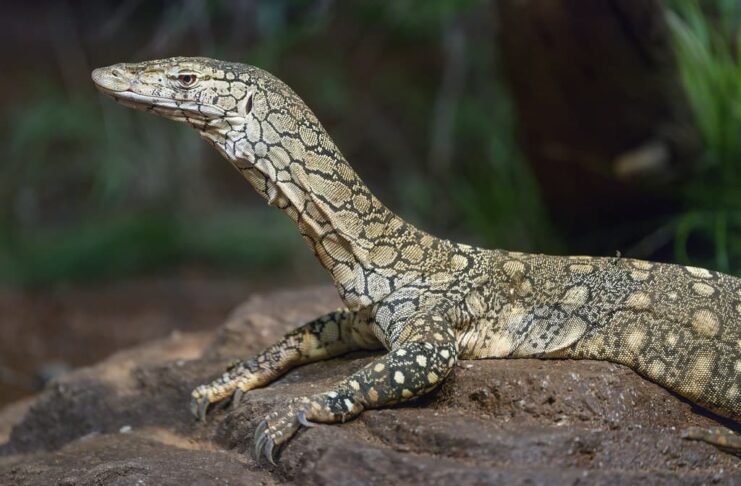
Habitat: Australia
Here we have the largest lizards native to Australia as well as the 4th largest lizards on earth. Despite the fact that it is one of the biggest lizards, the perenties are very shy since they avoid humans. You can find them in the arid desert areas of Western Australia, South Australia, the Northern Territory, and Queensland. Their favorite habitats are rocky outcroppings and gorges with hard-packed soil and loose stones.
The cool thing about perenties is that they can excavate a burrow for shelter in just minutes using their claws. Those long claws also enable them to climb trees easily as well, but there’s more. These lizards often stand on their back legs and tail to gain a better view of the surrounding terrain. Not to mention they are fast sprinters that can run using either all four legs or just their hind legs. These lizards are pretty amazing.
5Nile Monitor
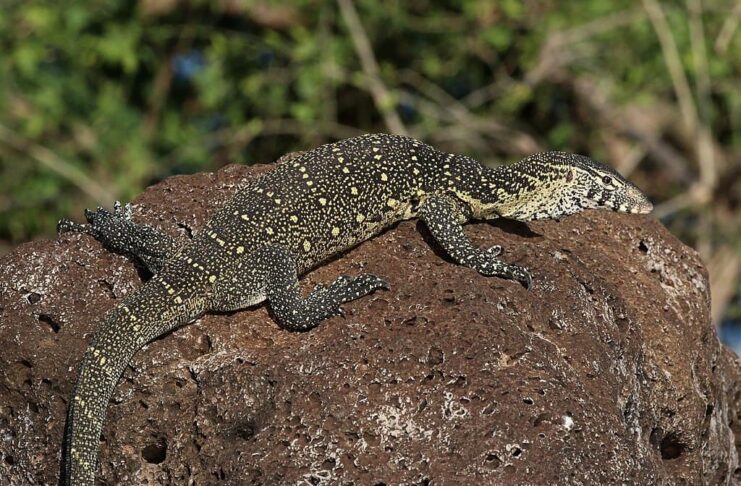
Habitat: Africa
It is weird how people want to keep lizards like Nile Monitors as pets in spite of their large size and agility. Lizard lovers will be still lizard lovers; however, because of the Nile Monitors’ abilities to swim and climb trees. These huge lizards are strong, large, and aggressive, simply not a perfect combination for a pet at all. That is not all, they have muscular bodies, strong legs, and powerful jaws along with sharp and pointed teeth.
The most powerful part of their body is the claws that they use for climbing, digging, defending, and tearing prey. The talent does not end there, Nile Monitors are excellent climbers and quick runners on land. No doubt why they can feed on anything like fish, snails, frogs, crocodile eggs, young snakes, birds, small mammals, and more.
They are the second largest reptiles in the Nile river thrive around rivers, and they are resistant to taming. Juvenile monitors will tail whip as a defensive measure, and they are capable of inflicting moderate to serious wounds as adults. From biting to scratching, none of them is something you would want to experience.
6Rock Monitor
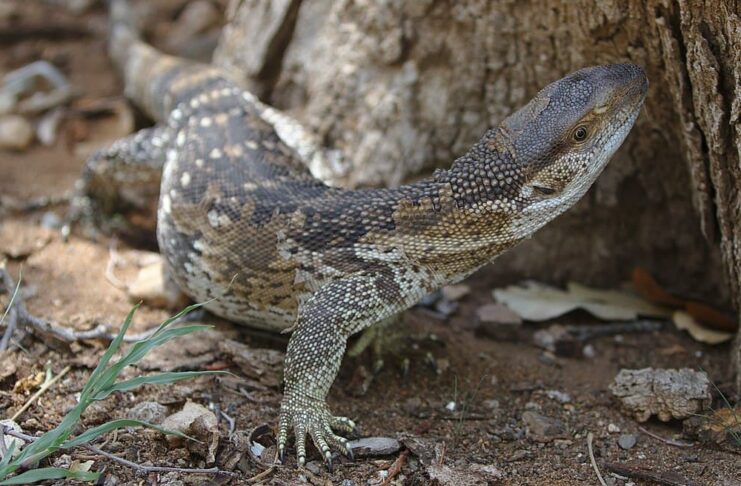
Habitat: Africa
This is another member of the monitor family, and this species is as large and fierce as its relatives. They are one of the largest lizards in the world, and the second longest lizards in Africa. Rock Monitors live in a variety of dry habitats like steppes, prairies, and savannahs except for desert interiors, rainforests, and thick scrub forests.
These monitors are fierce predators, and they hunt both on the ground and in trees. The thing is that the lizards have venom in their bites, but are not fatal to humans. However, the venom can cause illness and pain that is very dangerous to small animals or infants. Just so you know, their venom contains the same poison found in rattlesnake venom.
7Bengal Monitor
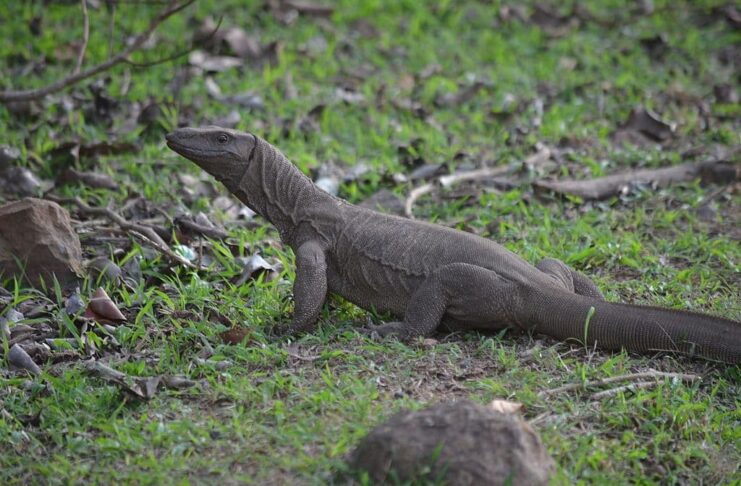
Habitat: India
Also known as Common Indian Monitors, these large lizards are everywhere over the Indian Subcontinent as well as Southeast Asia and West Asia. They are mainly territorial, but they are usually very shy and avoid humans at all costs. With their keen eyesight, they can detect human movement about 250 meters away. When caught, a few individuals may bite to free themselves but rarely do so. Compared to most monitors that are dangerous and venomous, these ones are rather harmless and defenseless.
8Giant Tegu
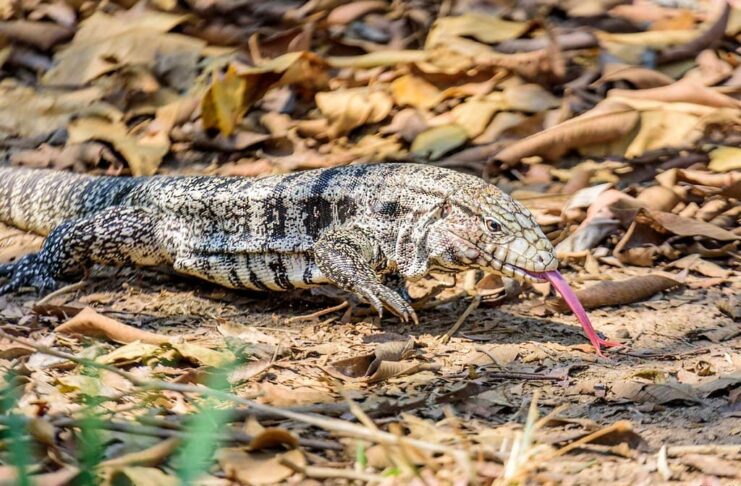
Habitat: South America
Being the largest species of tegu lizard, there is no question of its name in this list of largest lizards. Giant tegus aka black and white tegus are omnivorous that inhabit the tropical rainforest, savannas, and semi-deserts of east and central South America. These lizards are capable of running at high speeds all on four, and they can run on two legs for some distances. The good news is you have them as pets, and these lizards tend to become attached to their owners. If a unique pet is what you are looking for, a giant tegu might be the one you seek.
9Green Iguana
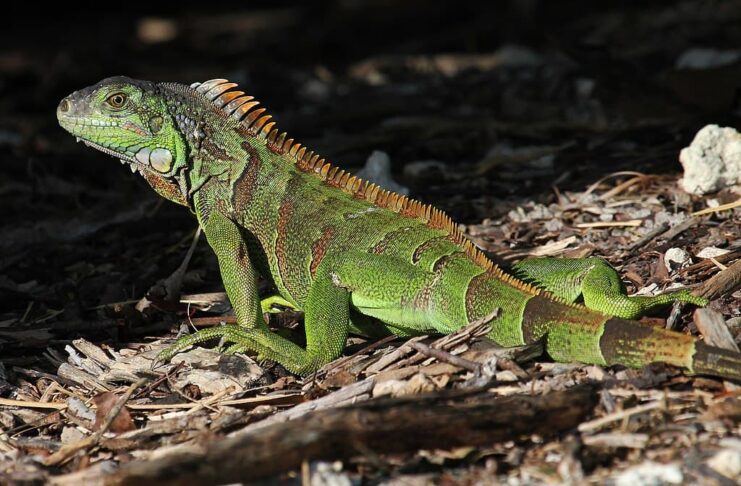
Habitat: South America
Green Iguana aka American Iguana is a large and arboreal species of lizard that is native to Central and South America. They are herbivores, but these lizards can grow up to 1.5 meters in length from head to tail. Some species can grow even up to 2 meters, and many people love to have them as pets. These iguanas feed on leaves, flowers, and fruit, and they are active during the day.
With green color, they can camouflage and blend into the landscape easily as part of their survival skills. As for the skin, it is tough and waterproof which allows them to live near the water with zero worries. These iguanas are excellent swimmers, and they will dive into the water to avoid predators. Green iguanas are also great at leaping from one branch to another at great heights when threatened.
10Gila Monster
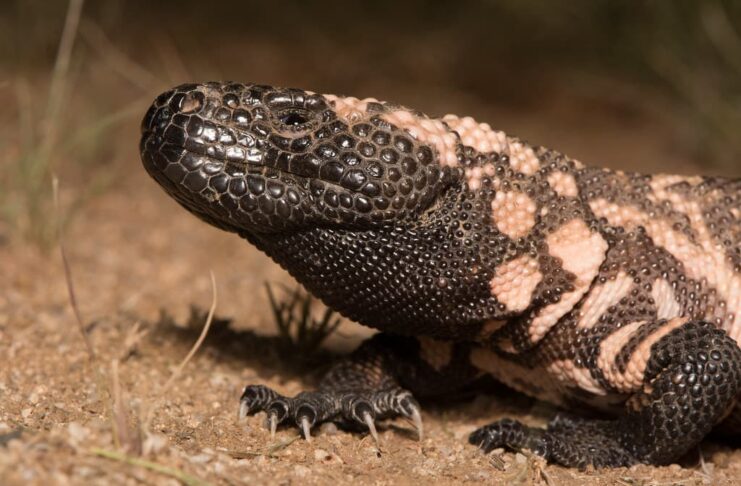
Habitat: United States
These are the largest lizards native to the United States with the famous reputation of being one of only two venomous lizards. Gila (pronounced hee-la) monsters are frightful and repulsive according to local folklore due to their fearsome appearance. These monsters are actually scary when they bite because their venom is very strong.
When biting, their teeth inject the venom while their jaws stay locked without losing the grip for several seconds. Plus, they may even chew so that the venom goes deeper into the wound. The good news is bites from Gila monsters rarely cause death to humans, but getting it to loosen the grip is a bigger problem. However, these lizards tend to avoid humans and other large animals so the chance of experiencing the bites is rare.
You can find these solitary reptiles in desert and semi-desert areas like rocky foothills. There, they feed on birds’ eggs and nestlings, rodents, frogs, lizards, insects, centipedes, worms, and carrion. To track prey, Gila monsters flick their forked tongue out to pick scent particles in the air. Since they are not very fast, they need to sneak up on their prey and bite them before they get away. Gila monsters don’t chew, they swallow their meal whole; but they break open eggs.
Related Post: Prehistoric Animals That Are Still Alive Today

